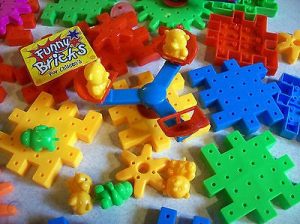Are You In The 1%?

The Rule of 1% is simply defined as adding to your customer service one percent at a time. Before you can do this you must have your consistency perfected or it will never work. This one percent may seem small, but if you approach the vision for your company with baby steps, you will find a huge increase over a solid chunk of time. It’s not a sprint, it’s a marathon.
Avoid doing too much at one or you’ll set yourself up for failure. Think of the confidence you and your employees will have when you improve one percent each week. By the end of a year, you’ll have improved more than 50%!
While, rules and standards are necessary for growth, always be flexible with your best customers. Most retailers only allow a set number of items into a dressing room to reduce the risk of shoplifting, but it generally restricts the large percentage of people who are not stealing from you. Flexibility is the key to what you deliver to your customers and consistency is the key to how you deliver it.
The bottom line is customers rely on you to deliver what you promise. If you spend too much on bulky advertising that promises more than you can deliver, even your best intentions will unravel quickly and you will fail.
Focus on your vision and baby steps to turn your satisfied customers into Raving Fans.
I hope you’ve learned a lot out good customer service and how it’s essential to your overall success. If you need help with any of the steps we’ve gone through over the last four lessons try our GUIDED TOUR and get access to some of the best resources, tools and coaches available.
In upcoming posts we’re going to explore strategies of bagging the big clients and keeping them.
Another Secret Revealed

In the last post we talked about the first secret to building a solid customer service plan and how to decide what your vision is.
Today we’ll talk about the second secret in taking your satisfied customers to raving fans. You must know what your customers want. Know who your customers are and you will know better how to serve them. Demographics are really important here. An upper-class woman in her 30’s is going to have completely different expectations than a working class man in his 50’s.
There are four main areas you need to consider and plan when figuring out what your customers want:
- Listen to Your Customers
- Ask Your Customers Sincerely
- Offer More than Just a Product/Service
- Know When to Ignore Them
These are all important when deciding what your customers want out of their shopping experience.
Listen to Your Customers
You need to listen to both what they say and what they don’t say. Customers may say they want one thing and really mean something else. For example, if you customers are begging for lower prices, you may find out their real priority is quick delivery.
Also, listen to your “silent” customers. These are the customers don’t bother to complain because the service is so bad they’ve just given up and don’t feel like their voice matters. They feel unwanted and when a competitor shows up, they’ll be gone.
Lastly, you need to listen to customers who only reply with “fine”. These customers are similar to the “silent” customers in that they are so used to bad customer service they only give a monotone response.
Ask Your Customers Sincerely
If you aren’t sincere when you ask their opinion, they are going to see right through you. You may be thinking, “What about the customers who aren’t saying anything?” You need to ask them sincere questions that get them thinking about their experiences. Make them feel like you really care, and you should!
Offer More than Just a Product/Service
Your customers are looking for much more than a simple product or service, they are looking for an experience that makes them feel good. They gauge every step of the process with a value. When you take this into consideration and treat them like people, they will feel like they belong.
Know When to Ignore Them
You may think this goes beyond providing good customer service, but in reality you can’t give them everything and someone people you will never make happy. You have to set limits and stick to them. If your vision and company don’t meet the needs of the customer, they will be best suited somewhere else.
These are the steps and tricks to figuring out what your customers want and how you can use them to work on your customer service vision and plan.
If you get stuck, try our GUIDED TOUR and let us help you through the process.
Shhh… I Have a Secret

Customer service is a pretty hot topic and can make or break your business. Consumers have little patience for lousy customer service and easily get tired of waiting in long lines, trying to get a live person on the line, going through an interrogation to return something or trying to communicate through a language barrier.
If you provide them with a simple, efficient, pleasant experience they will revisit your business over and over. More importantly, they will tell everyone they know!
There are three secrets to good customer service, the first one we’re going to conquer is knowing exactly what YOU want.
You are the captain of the ship and the visionary for the future of your business, so you need to have a clearly defined plan for your business and that includes customer service. There are three main goals you need to consider:
- It needs to be easy for your customers to do business with you. You can do this with advertised discounts, kiosks, your website and other technology based programs to help them shop.
- Doing business with you needs to be a warm and pleasant experience. Your staff has to be knowledgeable, approachable, warm and patient. Your customers need to feel like they are getting a good value for their time and money. Perceived value goes beyond the price of the products and extends to their shopping experience.
- Change your mind set and ask yourself “How can I NOT afford to do these things?” This shouldn’t be a question of expenses, but making and keep happy customers.
Which these thoughts in mind you also need to take a few things into consideration when deciding on the actual programs and standards you’ll put into place.
- Share your customer service vision with the rest of your staff.
- Connect your incentive programs and bonuses directly to customer service.
- Monitor the level of customer service your staff is putting out.
- Know when you can ignore what your customers want.
- Continuously focus on your goals.
Now, that you know what you want you can starting thinking about how to meet those wants and create a positive customer service experience.
If you’re having a hard time deciding on what you want, the tools, resources and coaches in our GUIDED TOUR can help you define the wants and needs of your company in relation to customer service.
You Need Bricks First to Built It!

Today I’d like to talk about the three keys to business development and how you can put the right bricks in place to build a solid foundation.
There are three main areas of business development:
- Innovation
- Quantification
- Orchestration
If done well these three areas will help you build a solid foundation for you business. Let’s talk about each one of these for just a minute.
Innovation
Innovation should not be confused with creativity, which is the expression of ideas. Innovation is taking these ideas and putting them into action. This is where a large amount of your focus should be in the beginning and even throughout your business’ entire lifespan.
Quantification
This, of course, refers to the numbers. We are talking about the value of your innovation. The best way to gauge this is by your customer response. Look to positive responses for what you are doing right-and keep doing it. Look to your negative responses to find out what you’re doing wrong-and fix it. This will enable you to keep growing and progressing with the needs of your customers and business climate.
Orchestration
Once you’ve had a chance to find what areas are working, you can narrow down those areas and concentrate on making them the stand out ideas. You shift your focus here to get the most out of your business and to meet the needs of your customers.
We can help you work through these three areas to put together your franchise prototype during your GUIDED TOUR.
In the next few lessons we are going to transition to the 7 specific areas you need to consider in your franchise prototype process:
- Primary Aim
- Strategic Objectives
- Organizational Strategy
- Management Strategy
- People Strategy
- Marketing Strategy
- Systems Strategy
These 7 areas will fine turn your plan for the ultimate level of success.
If you have a business and have not yet managed to start to create wealth and systems that allow you to take time off, build retirement accounts or pay for your children’s college, then learn and master the steps outlined in my book. I am a huge advocate of education and mentorships. Get the right information, find someone that knows how to walk you through them and watch your quality of life take new shape.
To learn how to avoid the 3 key mistakes all small business owners make, visit www.scalemyprofitsacademy.com
Juan Velasco, MBA
Scale My Profits
P.S. Book a Business Break Through Assessment to see how I can find you $100, 000 in revenue in your business with out spending one extra dollar in advertising or marketing.
Telemarketing is NOT the Anti-Christ
Today you’ll learn how to use direct mail marketing and, yes, telemarketing to your full advantage. I know, the word “telemarketing” might as well be four letters, but there is a way to help customers feel like they are getting personal attention and keep them from blocking your number!
With the success direct mail marketing has had and the availability of computers, these can be used as a powerful marketing tool for your success. Telemarketing is best for high priced, high margin products/services.
Here are the key steps to putting together a highly effective direct mail marketing program:
- List all benefits customers will get from the purchase of your products and services.
- Pick the single most powerful benefit out of that list.
- Build an attention-getting headline around that benefit. Remember to use emotion-fulfill the desire to be young, wealthy, desired, popular or successful.
- Develop a sales letter using the headline you created to grab attention, provide information and motivate customers to act.
- Put together supplementary items, such as a brochure, order form, reply envelope or note that encourages them to read the letter.
- Rent or purchase a mailing list.
- Compare cost of mailing vs. cost per order.
- Continue to test and refine your direct mail marketing plan.
You can see how direct mail marketing can help you find a local or even country-wide target market to send letters or postcards to and draw in new clientele and customers. Fine-tuning your marketing campaign will bring better results and therefore lower the overall cost of the campaign.
To be successful in telemarketing you need to:
- Put together a plan, so you know exactly what you want to accomplish during the call.
- Develop a list of topics to discuss and the questions you want to present around these topics.
- Input verbiage checking to see if you are calling at a good time.
- Include enough questions to keep the conversation interesting, but not too many to sound like you are interrogating.
- Start with broad questions and narrow your focus as the conversation continues.
- Offer feedback to show them you are paying attention and appreciate their time.
- Don’t insult their intelligence or manipulate them.
- Listen first, talk second.
- Be relaxed and conversational.
Telemarketing doesn’t have to be the trauma it’s made out to be. You can put together an honest, personal and effective telemarketing campaign that is endearing, informative and gets the job done. Think of how you would want to be treated on a marketing call. Ask your friends and family what they hate most about the telemarketing calls they get and work hard to craft your plan in a better way.
“When selling by telephone, you have approximately thirty seconds to convince the customer to listen to you. You need an opening statement that captures their attention, conveys who you are, what you want and why the prospect should listen.” Jay Abraham
It’s easy to see how direct mail marketing and telemarketing can positively affect your business by bringing in new customers and increasing the level of awareness about your products, services and company branding. Our GUIDED TOUR offers the resources and tools you need to work through these processes and put together the best marketing plan you can.